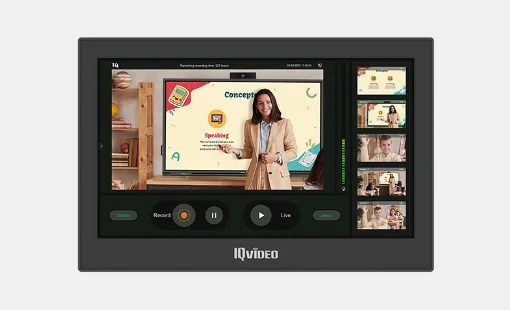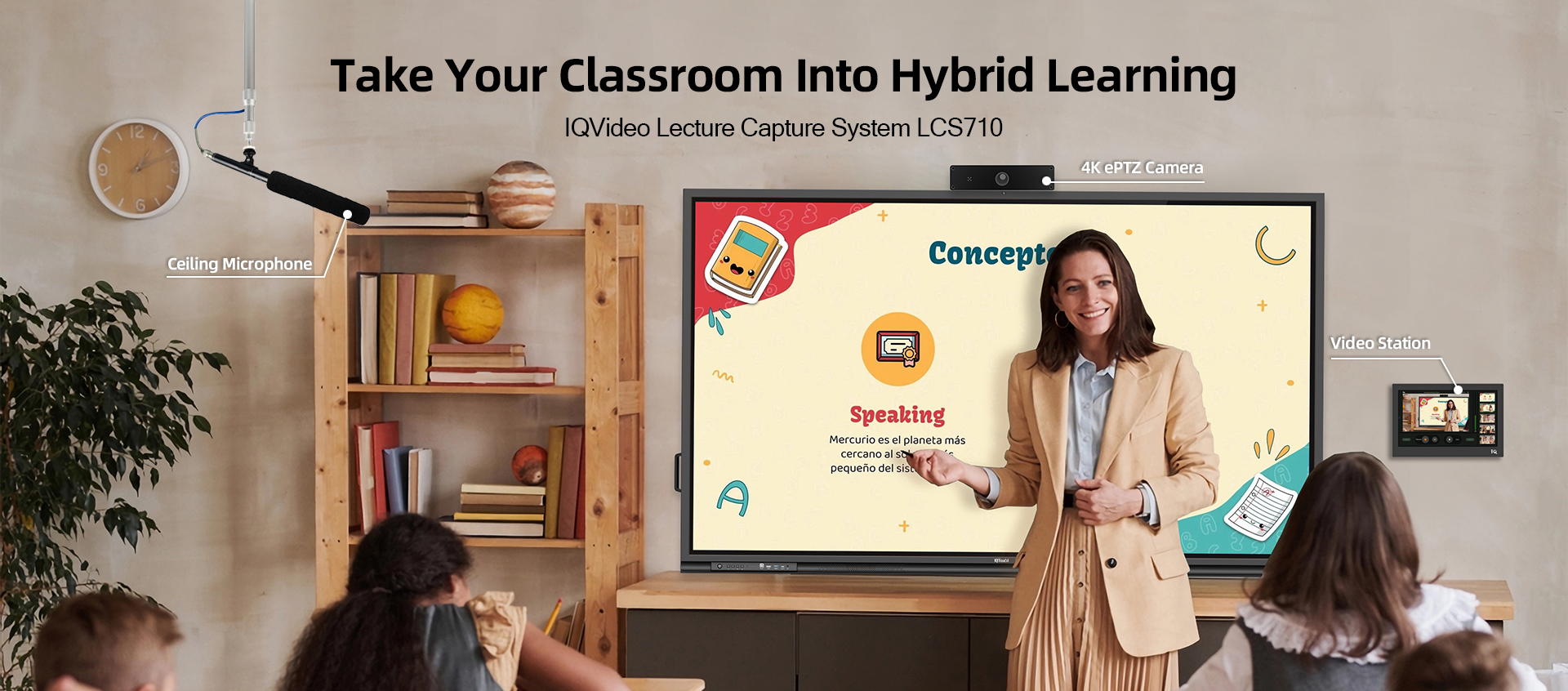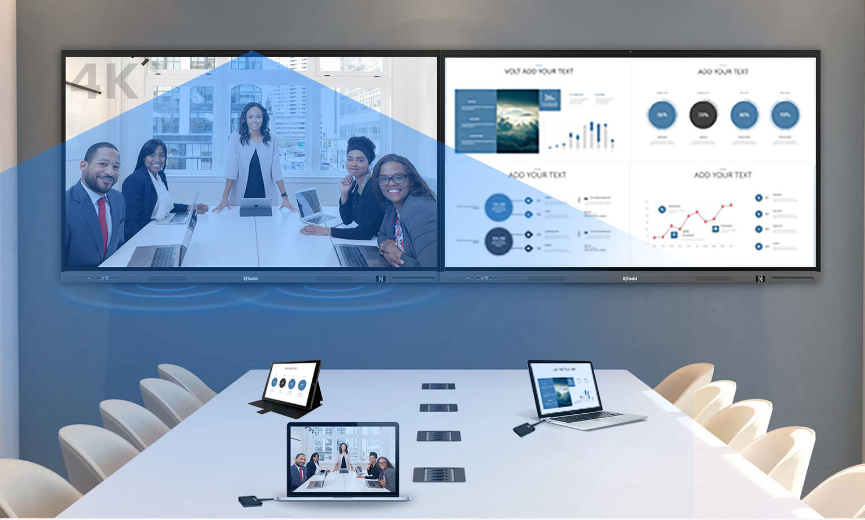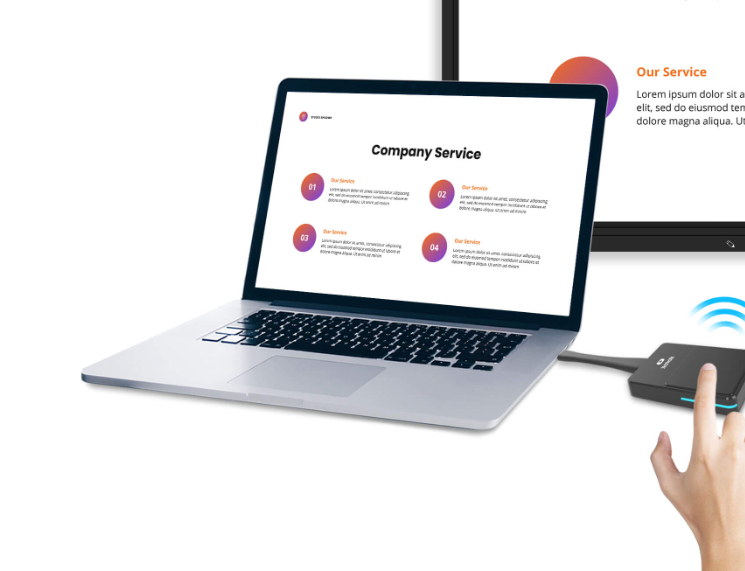A well-architected, synchronized lecture capture system is a great way to improve the recording and listening experience. Therefore, we must think as hard as possible before purchasing the lecture capture system. As a leader in audio visual broadcast, in this post, we will be based on a deep background in market research and product development. Here are a few key factors you may need to consider in your selection and purchase process. Each key element is a direct hit to your heart, and we hope you can choose the lecture capture system that is best for you with our help.
With the primary goal of improving teaching and student experience, here are eight factors you can reference. By carefully considering these matters, you can make informed decisions.
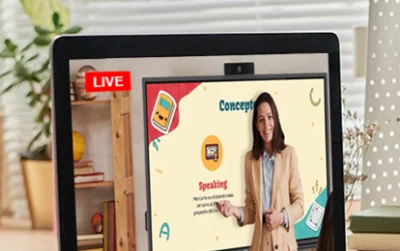
When choosing a lecture capture system for your classroom or business conference room, you must be clear about your goals and requirements for purchasing a lecture capture system. In defining the requirements, you must know what content you want to record, whether a small in-house lecture, a public presentation, or a medical practice experiment. Different recording content requires additional recording quality, functionality, and scalability requirements. For example, when you are holding business strategy meetings, a meeting camera capable of auto framing and zooming in and zooming out gives us a more detailed view of the Speaker's strategy.
Before you buy a lecture capture system, you need to have a reasonable budget that considers your company's needs and finances, such as purchasing costs, deployment and maintenance costs, and the long-term return on investment of the system.
You need to evaluate your classroom facilities and existing technology infrastructure. Ensure your classroom is equipped with proper network connections, cameras, microphones, and audio equipment to support the regular operation of the classroom recording system.
You also need to choose a system that is easy to use and operate to ensure that teachers and students can easily use the recording system. With its intuitive interface, precise function, and easy navigation, the procedure can improve teaching efficiency. Choose a lecture capture system that is very hard to use and requires complex setup and operations before each recording. It will not only add to your workload, but it is also easy to discourage the dissemination and sharing of knowledge.
One of the lecture capture system's two core elements is the recording and transmission of sound quality. Consider the video and audio quality of the recording system. A good lecture capture system should provide clear video and high-quality audio to ensure students can effectively understand and review classroom content. Let's say you're a teacher working to improve students' IELTS test scores and help them apply for the dream study offer. Suppose you're playing audio to enhance students' listening skills, and the microphone's sound is poor. In that case, students are likelier to hear "broke" as "brought" or " discussed" as " diseases". These errors can affect a teacher's judgment of teaching outcomes, and it is also easy to discourage students from studying.
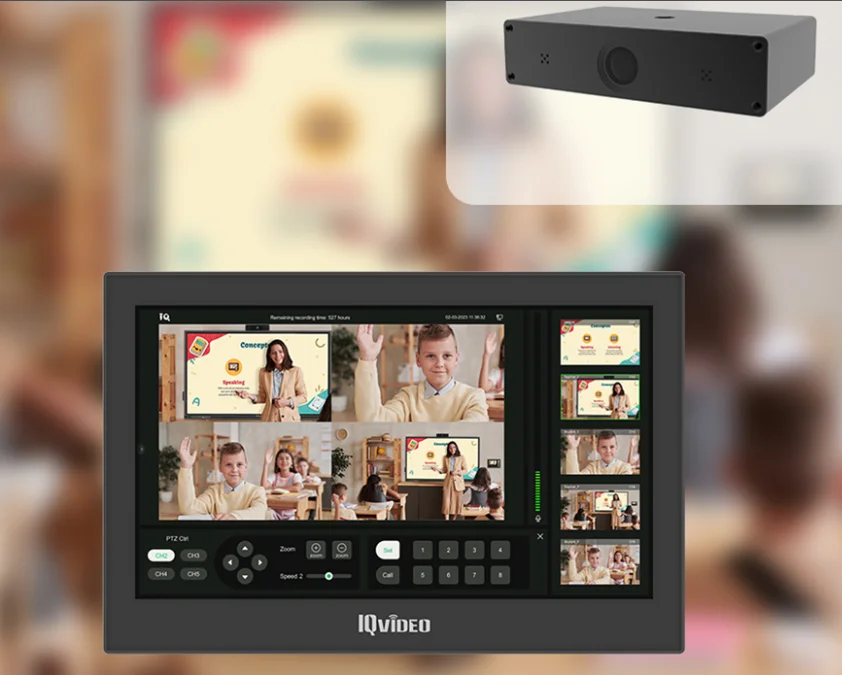
It is also essential to check the specification chart on the product page or to communicate with customer service to determine if the lecture capture system has sufficient storage capacity. Audio and video often need a large amount of memory to save and record, especially for the high accuracy requirements of video. High-capacity storage and high-compatibility access ensure the audience can easily access and review the content. Besides, whether the lecture capture system supports FTP protocol is also a factor that we need to take into consideration. Delivering the recorded courses to the FTP server allows larger storage for course review and access afterward. We've discussed the significance of lecture capture system accessibility in previous articles, and you can see the positive effects of its accessibility for students to access learning materials anytime, anywhere.
It is a matter of national pride to browse the procurement website and see that your country has a state-of-the-art lecture capture system. However, the better and more appropriate lecture capture system for your scenarios will likely be a more innovative and high-quality product from other countries. In the process of shipping, packaging is often a headache time. A well-protected, well-packaged transportation service is essential, especially for electronic equipment with complex internal components that require the completion of complicated work projects. After all, no one expects to pick out and wait patiently for the product to arrive by sea, only to open the package and discover that it's just a bunch of broken firmware that doesn't work.
Not all lecture capture system consumers are IT experts or advanced electronics repairmen. Finding a brand that provides timely, responsive, professional after-sales service is also essential. Sometimes, these services will not appear in the same after-sales service. Some after-sales service is good at the technical level of operational guidance and often not familiar with the operation of customer patience, thus bringing the communication aspect contradiction, bringing a bad consumptive experience to the consumer. Some after-sales services may have a very gentle understanding of consumer psychology. However, equipment failure and key technical solutions are unknown. So, when you pick a lecture capture system, you should also consider the quality of service and professionalism of the brand's after-sales team.
In addition, the response rate for after-sales service is also significant because sometimes the breakdown of the lecture capture system will suddenly appear in a serious situation; it is a pleasure to fix problems and equipment problems on time and to keep essential meetings running smoothly, even if the temporary equipment failure is a little uncomfortable.
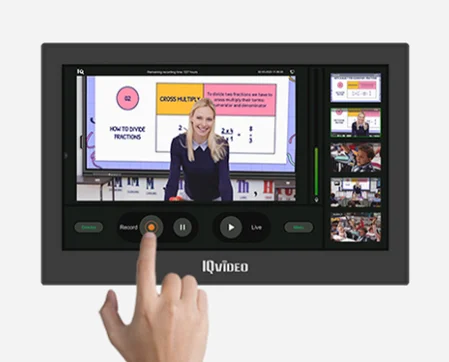
Suppose you're confused by the wide variety of Lecture Capture systems you're viewing and don't know which one fits the eight factors above. In that case, we offer you the IQVideo Portable Lecture Capture System LCS910. It is our company's new Lecture Capture system, iteratively optimized for technical services and functionality based on user feedback and usage expectations.
Regarding ease of operation support for one-button start recording, you immediately touch the Record Button on the screen to start recording video lectures. Furthermore, the Video Station of IQ LCS910 supports multiple input sources, can display video content on multiple split screens, and captures panoramic images of teachers and students at the same time. In addition, the high magnification 20x optical zoom and 10x digital zoom lens provide high-definition video performance that gives you a clear view even from a distance. After recording audio VUSIAL content, you can stream the instructional video to the online platform, allowing the audience to watch and replay the lectures you recorded and transmitted in real-time.
Through thorough market research, we know that the IQ lecture capture system deeply understands the user's needs and the potential expectations of scenario usage. Our technical support and training services can train teachers and administrators to maximize the potential of the classroom recording system. If you are interested in our Lecture Capture System, click here to learn about our products. Whether the intelligent IQVideo Lecture Capture System LCS710 or the advanced IQVideo Portable Lecture Capture System LCS910, we can all provide professional and patient answers.
Here are some other articles that we think might interest you:
Networked Lecture Capture Systems for Universities
Capturing Success: The Power of Lecture Capture Systems in College
The Benefits of Custom Lecture Capture Solutions for Universities
All-in-One Lecture Capture System:
Panopto Focus is a comprehensive,
all-in-one solution for lecture capture, offering a combination of hardware and
software components.
High-Quality Video Capture:
Panopto Focus excels in capturing
high-quality video, ensuring a clear and engaging recording of lectures and
presentations.
Integrated Live Streaming:
The system facilitates real-time live
streaming, enabling remote students to participate in classes and events.
Automatic Recording and Scheduling:
Panopto Focus automates the recording
process, allowing for scheduled captures of lectures without manual
intervention.
Large Lecture Halls:
Designed to cater to large lecture halls and auditoriums,
providing a scalable solution for educational institutions.
Interactive Classrooms:
Suited for interactive classrooms where
dynamic teaching methods and multimedia content are utilized.
University Lecture Capture:
Widely adopted by universities and higher
education institutions for capturing and delivering course content.
Corporate Training:
Employed in corporate settings for
recording training sessions, webinars, and knowledge-sharing events.
Seamless Integration:
Panopto Focus seamlessly integrates with
popular learning management systems (LMS) and other educational technologies.
User-Friendly Interface:
The system boasts an intuitive interface,
making it accessible for both educators and students.
Analytics and Reporting:
Panopto Focus offers robust analytics and
reporting features, providing insights into video engagement and viewer
behavior.
Reliability and Scalability:
Known for its reliability, Panopto Focus is
a scalable solution that can accommodate the needs of growing institutions.
In summary, Panopto Focus stands out as a
versatile lecture capture system, excelling in capturing, managing, and
delivering educational content in diverse scenarios. Its integration
capabilities, user-friendly design, and robust feature set make it a valuable
asset for educational institutions and organizations alike.
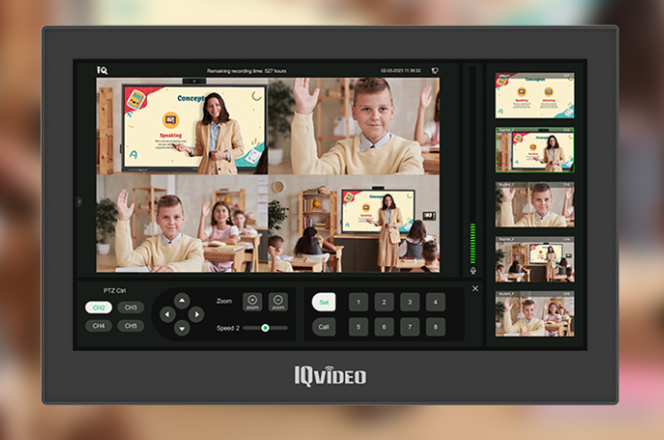
Video Station:
The IQVideo LCS710 from IQ comprises a dedicated video station
designed for capturing and recording lectures in educational occasions like
classrooms and training rooms. The video station is integrated with a 13.3 inch
capacitive touch screen for one button recording and live streaming.
4K Auto-Tracking Cameras:
Equipped with two high-resolution 4K
auto-tracking cameras, one for teacher, the other for students, ensuring clear
and dynamic video capture. The auto-tracking cameras enable capture every
movement from teacher and students within the classroom.
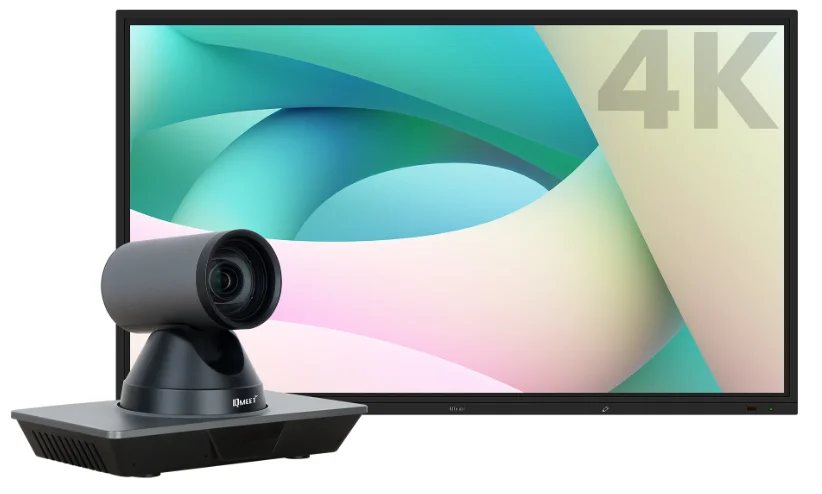
Ceiling Mic:
Includes a sophisticated voice pickup
system with a 7-meter range for capturing clear audio, perfect for standard
classroom size around 60 to 80 sq.m.
Lecture Capture:
IQVideo LCS710 excels in capturing
lectures, presentations, and educational content with precision.
Live Streaming:
Supports live streaming of captured content
with RTMP/RTMPs protocal, like to mainstream platform YouTube or Facebook,
enabling real-time engagement and remote participation.
Auto-Tracking Technology:
Utilizes advanced auto-tracking technology
to follow the presenter, ensuring optimal video framing.
OTA Firmware Updates:
Supports over-the-air (OTA) firmware
updates, ensuring the system stays up-to-date with the latest features.
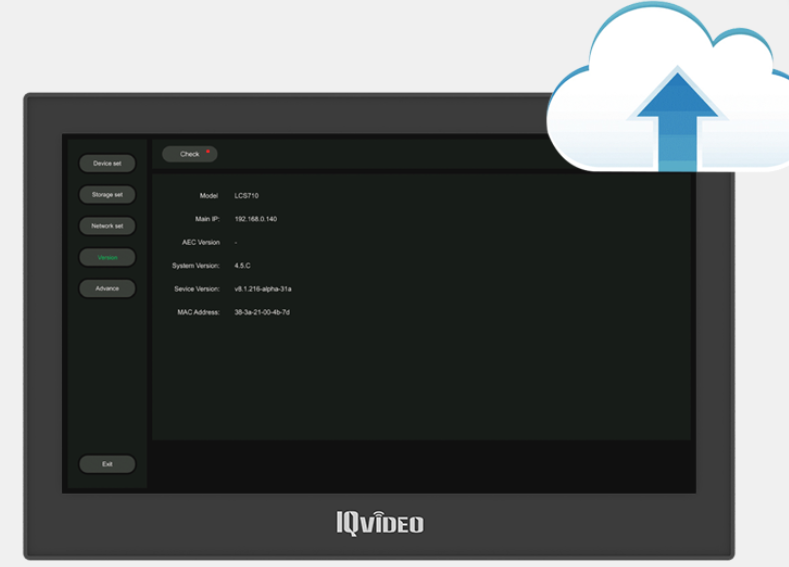
Classroom Settings:
Tailored for use in classrooms. For larger
classroom occasions like lecture halls, and educational institutions, LCS710
set can also be extended.
Hybrid Learning Environments:
Ideal for hybrid learning scenarios in
universities or campuses, facilitating both in-person and remote education.
Educational Institutions:
Widely adopted by universities, schools,
and training centers for capturing and delivering lectures.
Corporate Training:
Utilized in corporate settings for
recording training sessions, seminars, and workshops.
High-Quality Video and Audio:
The combination of a 4K camera and advanced
audio pickup ensures top-notch video and audio quality.
User-Friendly Interface:
The touch screen interface makes it easy
for educators to control and operate the system.
Live Streaming Capabilities:
The ability to live stream enhances
accessibility and allows remote participants to engage in real-time.
OTA Updates for Future-Proofing:
Over-the-air firmware updates contribute to
the system's longevity and adaptability.
In summary, the IQVideo LCS710 is a sophisticated lecture capture system tailored for educational and corporate environments. Its advanced features, high-quality components, and adaptability make it a robust solution for modern learning and presentation needs.
Compact Hardware:
The Epiphan Pearl Mini is a compact and
portable hardware device designed for video capture and live streaming.
Multiple Video Inputs:
Equipped with multiple video inputs,
supporting HDMI, SDI, and VGA connections for versatile compatibility.
Audio Inputs:
Includes audio inputs to capture
high-quality sound along with video.
Video Capture:
Primary function is to capture video
content from various sources, making it suitable for recording lectures,
presentations, and events.
Live Streaming:
Enables seamless live streaming of captured
content to platforms like YouTube, Facebook, or custom RTMP servers.
Simultaneous Streaming and Recording:
Capable of streaming to one platform while
simultaneously recording the content, providing flexibility for
post-production.
Educational Settings:
Ideal for recording and streaming lectures,
educational content, and presentations in classrooms or online learning
environments.
Live Events:
Suited for live event coverage such as
conferences, seminars, and workshops.
Content Creators:
Widely used by content creators for
producing high-quality videos with professional-grade equipment.
Enterprise:
Adopted by businesses for webinars, virtual
meetings, and corporate communication.
Portability:
Compact and lightweight design makes it
easy to transport and set up in various environments.
Versatility:
Supports different video input sources,
providing flexibility for diverse recording scenarios.
Ease of Use:
User-friendly interface and straightforward
setup make it accessible for users with varying technical expertise.
Reliability:
Known for its reliability in capturing and
streaming video content without compromising quality.
In summary, the Epiphan Pearl Mini is a
versatile video capture and streaming device suitable for a range of
applications. Its compact form factor, diverse input options, and user-friendly
features contribute to its popularity among content creators, educators, and
businesses alike.
Dual-Channel H.264 Encoder:
The Matrox Monarch HDX is a hardware device
featuring a dual-channel H.264 encoder designed for broadcast-quality video.
Versatile Inputs:
Supports a variety of video input sources,
including HDMI and SDI, offering flexibility in connectivity.
Stand-Alone Recorder:
Functions as a stand-alone recorder,
allowing users to capture and store high-quality video content locally.
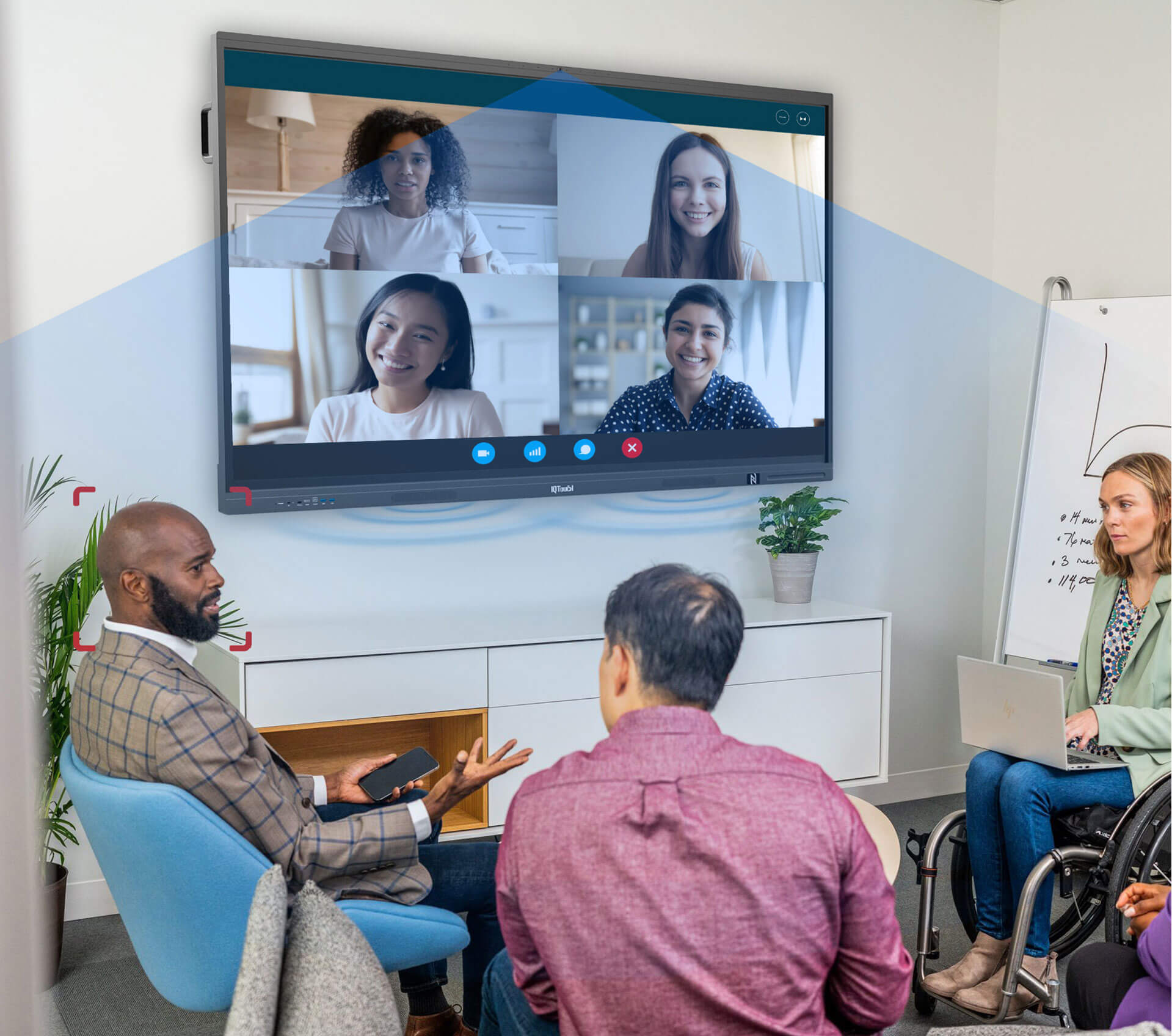
Simultaneous Streaming and Recording:
Enables simultaneous streaming to online
platforms and recording locally, providing redundancy and flexibility.
Live Streaming:
Capable of live streaming video content to
popular platforms like YouTube, Facebook, and custom RTMP servers.
Low-Latency Encoding:
Utilizes low-latency H.264 encoding for
real-time streaming applications.
Broadcasting:
Well-suited for broadcasting applications,
ensuring high-quality video delivery in real-time.
Live Events:
Ideal for capturing and streaming live
events such as sports, concerts, and conferences.
Webcasting:
Used for professional webcasting, offering
reliable encoding for online audiences.
Professional Video Production:
Adopted by professional video production
teams for its broadcast-quality encoding capabilities.
Education:
Used in educational settings for streaming
lectures, seminars, and distance learning.
Dual-Channel Encoding:
The dual-channel encoder allows for
simultaneous processing of two video sources, enhancing efficiency.
Robust Construction:
Built with durability in mind, suitable for
continuous operation in demanding environments.
Configurability:
Offers a range of configuration options,
allowing users to optimize settings based on their specific requirements.
Low Latency:
Low-latency encoding ensures minimal delays
in streaming, critical for real-time applications.
In summary, the Matrox Monarch HDX is a
powerful dual-channel H.264 encoder designed for professional video
applications. Its versatility, simultaneous streaming and recording
capabilities, and robust construction make it a reliable choice for broadcasting,
live events, and webcasting.

Versatile Connectivity:
The Vaddio AV Bridge Matrix Pro is a
comprehensive AV solution designed with a variety of input and output
connections, including HDMI, DisplayPort, USB, and more.
Integrated Audio Processing:
Features advanced audio processing
capabilities, ensuring high-quality sound capture and reproduction.
Matrix Switching:
The product excels in matrix switching,
allowing users to route different video and audio sources to multiple displays
and destinations.
Video Mixing and Composition:
Enables video mixing and composition,
providing a seamless visual experience during presentations, conferences, or
live events.
USB Bridging:
Facilitates USB bridging, allowing USB
devices to be connected and utilized within the AV system for enhanced
functionality.
Conference Rooms:
Ideal for conference room setups, supporting multiple video and audio sources for effective communication.
Live Events:
Well-suited for live events where dynamic
video mixing and routing are essential.
Classrooms and Training Centers:
Used in educational environments to create
versatile AV setups for interactive learning experiences.
Corporate Meetings:
Adopted in corporate settings for efficient
video conferencing and collaboration.
Broadcast Productions:
Utilized in broadcast productions for its
video mixing and routing capabilities.
Scalability:
The AV Bridge Matrix Pro is highly
scalable, accommodating various input and output configurations to suit
different AV setups.
Intuitive Control Interface:
Equipped with an intuitive control
interface for easy management of video and audio sources.
Reliability:
Known for its reliability, ensuring stable
and consistent performance in diverse AV applications.
In summary, the Vaddio AV Bridge Matrix Pro is a versatile AV solution known for its matrix switching capabilities, video mixing, and reliable performance. It finds applications in conference rooms, live events, classrooms, and various professional settings due to its scalability and intuitive controls.
Selecting the right lecture recording
device depends on various factors, including the size and nature of the
classroom, integration requirements, and the desired features. Panopto Focus, IQVideo
LCS710, Epiphan Pearl Mini, Matrox Monarch HDX, and Vaddio AV Bridge Matrix Pro
each offer unique strengths catering to different educational settings.
Carefully evaluating these devices based on your specific needs will ensure an
optimal lecture capture solution for your institution.
Here are some other articles that we
think might interest you:
Flipped
Classroom Recording System
Exploring
Lecture Recording and Streaming Solutions
Breaking
the Limits of Learning: Lecture Capture Classroom Empowers Remote Education
Compare smart MAXHUB UC S10 Pro with intelligent IQMeet Conference Cam CV810
Everyone wants to improve the meeting effect and collaborative experience through a conference camera. But how can we choose the most suitable and valuable conference camera? In this article, we will compare the MAXHUB UC S10 and IQMeet Conference Cam CV810 proto explore the potential of conferences through conference cameras.
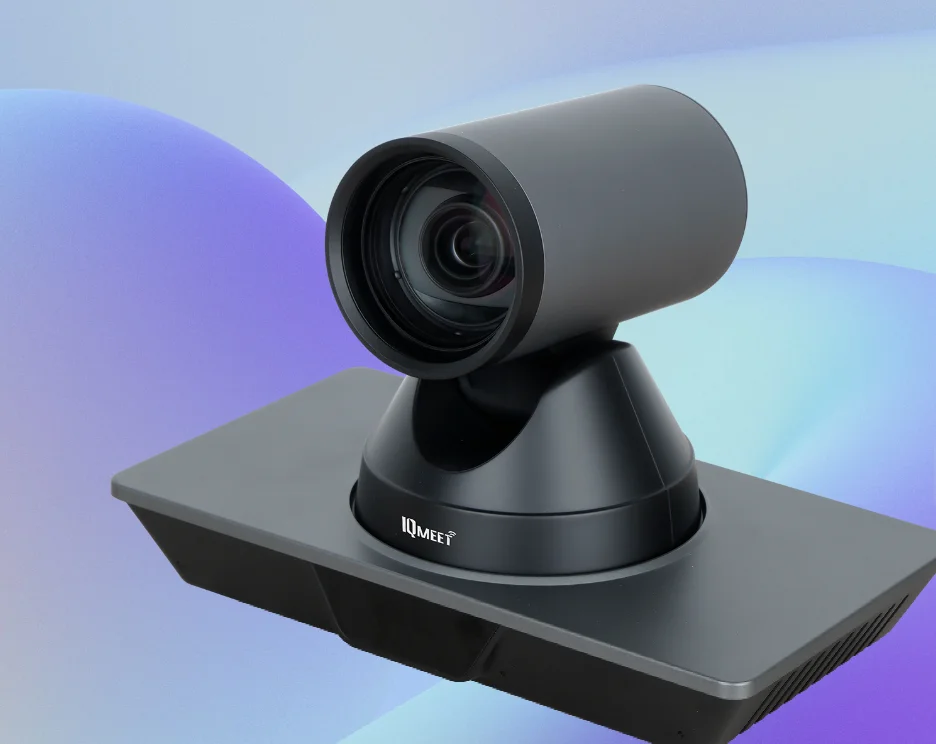
The main reason you need a conference camera is that a suitable meeting camera can help your meeting establish interpersonal relationships and improve communication effectiveness and participation in sessions.
High-quality video images can improve communication and efficiency by minimizing confusion and uncertainties. An effective conference camera can offer clear, high-definition video, allowing participants to easily observe each other's facial expressions, body language, and details. And can enhance the effectiveness of in-person communication during meetings.
Conference cameras help to display and share content, such as whiteboard presentations, documents, and product samples. By placing the content within the camera's scope, other attendees can watch and participate in discussions in real time, improving the interactivity and engagement of the meeting.
The high-quality video and audio transmission capabilities of the conference camera enable remote participants to participate in the conference in an immersive manner. They can watch the meeting content in real-time through their cameras, participate in discussions and decision-making, and enhance remote collaboration and collaboration effectiveness.
When selecting conference cameras, consider their video quality and resolution, optical and digital zoom, integration with cloud services and remote control, and interactive function.
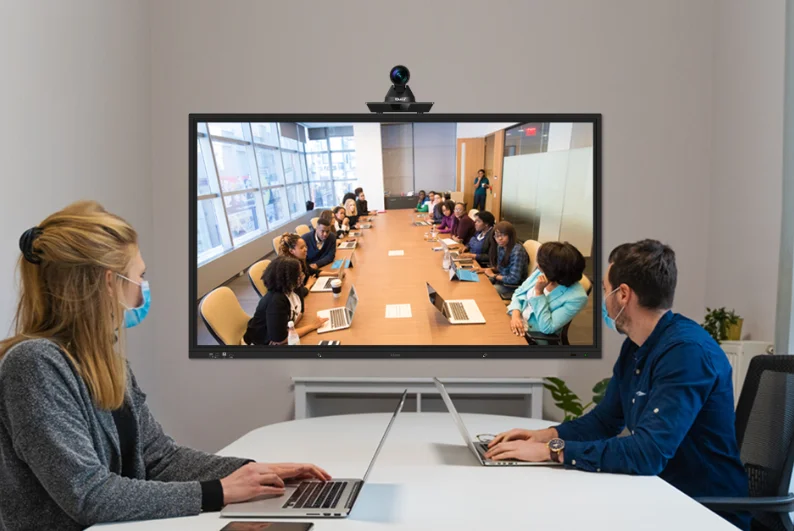
A higher-resolution conference camera can provide a better visual experience and enhance interactivity. High-definition videos can give clear and realistic images, allowing attendees to accurately see other attendees' facial expressions and details.
Optical and digital zoom are essential features that allow you to focus on specific people or objects during meetings. Optical zoom enlarges images without losing image quality through physical lens adjustments, while digital zoom enlarges images through image processing. Combining these two zoom functions can provide greater flexibility and focus control, enhancing the interactivity of attendees.
Capable of integrating and controlling cameras through cloud platforms or remote control software, enabling remote management, preset position settings, image adjustment, and other functions. This integration and control capability can improve the flexibility and convenience of meetings, allowing attendees to operate and adjust their cameras easily.
Some advanced conference cameras have interactive functions technology. The interactive process allows participants to control the camera's operation through gestures or voice, such as adjusting the focus and switching perspectives.
Furthermore, our previous articles also discussed various factors when choosing a conference camera, including image quality, optical and digital zoom, autofocus, microphone, connectivity, functionality, volume and weight, and price. You can click here to guide you in selecting the conference camera most conducive to enhancing team collaboration in your meeting.
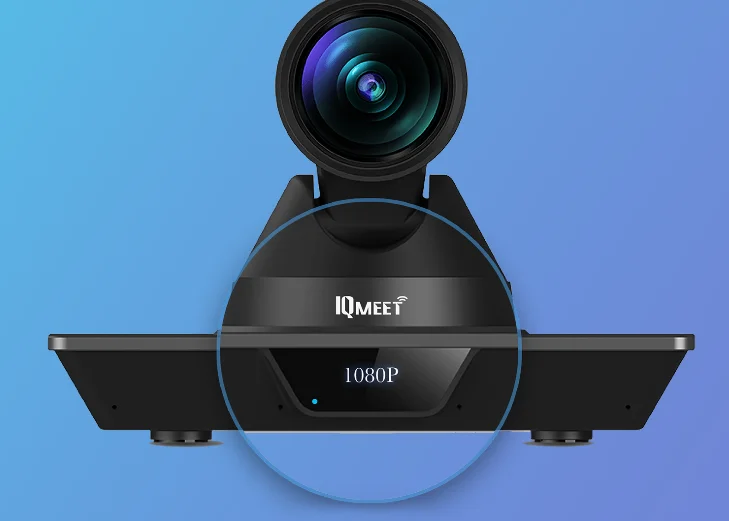
With advanced technology, the cutting-edge IQMeet Conference Cam CV810 Pro can take your video conferencing to a new level. It experiences stunning clarity with 4K ultra high-definition resolution at a speed of 60 frames per second, ensuring excellent accuracy in capturing every detail. 12x optical zoom allows you to focus on specific participants or objects in the room. And 16x digital zoom further enhances the level of detail, bringing you closer to reality.
Optical zoom: 12 x
Filed of View(FOV): Horizontal: 6.55’(tele) ~ 69.4 (wide)vertical: 3.66°(tele) ~ 42.8” (wide)
lmage Sensor: 1/2.8 Inch SONY CMOS Sensor
Frame Rate: 4K@30fps
Effective pixels: 8.51M; 16:9
White Balance: Auto/ Manual / Shutter Priority / Aperture Priority / Brightness Priority
Exposure mode: Auto / Manual/ One Push/ Specified Color Temperature
Focus: Auto / Manual/ One Push
Video Adjustment: Brightness, Color, Saturation, Contrast, Sharpness, B/W mode, Gamma curve
SNR: 250dB
The image is clear and realistic when adopting Sony CMOS sensors, supporting the highest resolution of 8.5 million pixels in 4K UHD.
Optical zoom can present detailed and distinct 4K images, helping to obtain close-up or long-distance pictures of different scenes.
High-precision PTZ of CV810 Procan make moves completely silently during the shooting process without affecting the audio-visual effect.
Intelligent CV810 Pro adopts advanced autofocus algorithms. The image remains clear and focused, even when the camera is moving or zooming in.
Equipped with a built-in gravity sensor, it supports automatic rotation of the image direction after installation in a clockwise or counterclockwise direction without manual settings.
Powerful CV810 Pro supports setting many preset positions for quick switching, with powerful remote control functions.
The product quality of CV810 Pro is reliable and guaranteed by global service, making it cost-effective in conference applications.
Multifunctional ports of CV810, including HDMI 2.0, USB 3.0, and LAN, for audio and video output. Plug and play, and you can start a video conference anytime. In addition, the LAN port connection on CV810 Pro enables web-based control and RTSP/RTMP streaming, allowing you to easily connect real-time video content to any online broadcasting platform, including YouTube.
Many scenarios can apply CV810.

Connect IQMeet Conference Cam CV810 Pro to the large screen or projector in the conference room through the USB connection, enabling video conferencing with remote conference members. Transmit and display each participant's images, equivalent to an actual participant.
Install IQMeet Conference Cam CV810 Pro in front of the classroom and connect it to an online teaching laptop through USB. The teacher's annotation and teaching in front of the whiteboard will be captured by IQMeet Conference Cam CV810 Pro and transmitted to remote teaching students in real time.
Doctors in remote areas can fix IQMeet Conference Cam CV810 Pro in the consultation room and conduct video consultations with professional doctors through video software. Professional doctors can view the patient's facial expressions, movements, and even injured areas in detail, and provide remote consultation guidance.
Install IQMeet Conference Cam CV810 Pro in a small conference room or workspace, and team members can participate in video conferences through intelligent devices for on-site communication, real-time interaction, promoting collaborative work.
Whether you are attending a video conference or sharing content, high-definition videos of MAXHUB UC S10 Pro ensure apparent visual effects, allowing each participant to see facial expressions, gestures, and essential details. Experience excellent video performance with MAXHUB UC S10 Pro, allowing you to bid farewell to pixelated or blurry video sources and embrace a genuinely immersive collaborative experience.
Digital zoom: 5 x
Filed of View(FOV): 120°viewing angle
lmage Sensor: 1/2.3 inch CMOS, 12MP
Frame Rate: 4K@30fps
lmage Adjustment: horizontal flip, vertical flip
White Balance: Auto (only)
Sound device: full-range speaker, 6-element microphone array
Focus: auto-framing, auto-tracking
Video Adjustment:
HDMI OUT: HDMI 2.0
Integrated high fidelity speakers and 6-element microphone array, supporting complete fan voice detection, providing a clear and smooth conversation experience.
Pre-installed software defines a 4K solution that supports 4K@30fps work through a USB-C connection.
Supports digital certificate and password verification to prevent illegal monitoring of conference content leakage.
MAXHUB UC S10 Pro is highly cost-effective, especially suitable for small and medium-sized teams' remote work and collaboration needs.
MAXHUB provides comprehensive technical support and upgrade service guarantee to meet long-term usage requirements.
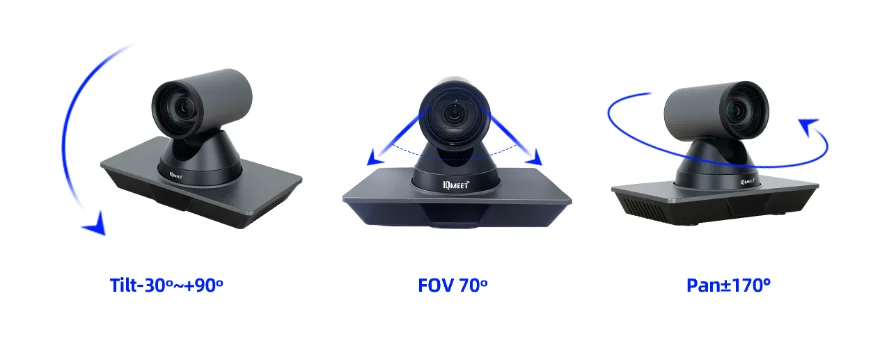
In conclusion, the versatile IQMeet Conference Cam CV810 Pro’s excellent video quality, professional audio features, and integrated system can create a seamless and immersive collaborative environment. The MAXHUB UC S10 Pro may be your best choice Iff you prefer a diverse and integrated design. However, if you are interested in IQView Document Camera E6510, please click here to contact us.
Here are some other articles that we think might interest you:
Elevate Remote Work with IQMeet Conference Camera
More and more enterprises are adopting technological capabilities to make their conference rooms more intelligent and efficient. Both interactive flat panels and little gadgets smart pens are tools that can make meetings more intelligent and efficient. Here, we provide six ways to empower your local smart meeting. In addition, we also introduce a series of meeting products from iqboard.net to help you create a collaborative and highly engaged arrangement.
Interactive flat panels have the functions of real-time collaboration and interaction, multimedia presentation and presentation, sharing and accessing information, digital recording, remote participation, and connection in intelligent conferences.
You can improve participants' participation and communication effectiveness by sharing and transmitting ideas through interactive flat panels. Participants can express their opinions and suggestions directly on the interactive flat panels and discuss with other participants. Improving participation and communication effectiveness helps promote the collision and exchange of ideas. It enables the innovation and decision-making process of intelligent meetings.
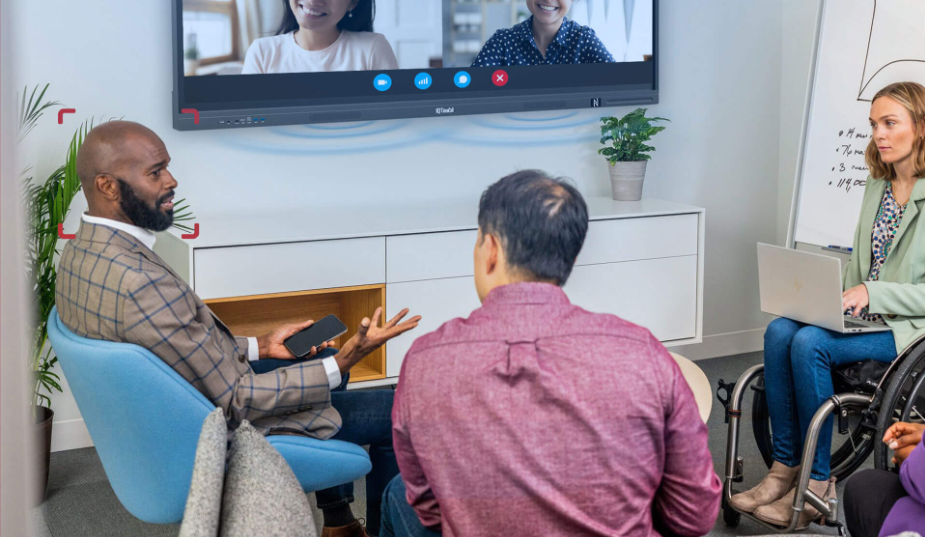
With the interactive display like IQTouch, you can be a facilitator to convey your ideas to team members quickly and effectively through smooth writing and rich audio-visual content from the high-resolution 4K display, enhancing interaction and collaboration in your meeting.
Interactive pen displays can display and demonstrate content more vividly. The speaker can directly write, mark, and draw on the Interactive pen display to convey information more clearly and intuitively, enabling the audience to understand better and absorb the speech content.
Mark and edit in real-time on the screen, discuss and refine content together. This real-time collaboration helps to enhance the team's collaborative ability and promotes the collective effect of intelligent meetings. Interactive pen displays can also provide more visual and interactive elements, helping to enhance the audience's memory and understanding of conference content. Through interactive tagging and annotation, listeners can participate and understand the speech content more deeply, thereby improving their memory of the meeting content.
Interactive pen displays can become a tool for collaboration and cooperation among attendees. Through versatile IQPodium, you can interact more with the audience during sessions. Whether it's a projector, LED display, or interactive flat panel display, the screen content and annotations you make during the meeting will be synchronized to the conference room monitor, which enhances the interaction between you and the audience.
Brainstorming encourages participants to freely express and share ideas, viewpoints, and solutions. It is a method of idea-gathering to solve problems or generate new ideas, which can stimulate participants' creativity and innovative thinking.
Brainstorming increases participants' participation and initiative. They can inspire and suggest each other, work together to find the best solution, promote comprehensive discussion and decision-making, and thus enhance team cohesion and cooperation.
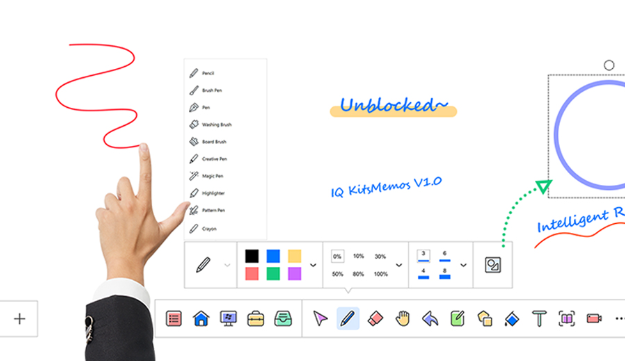
The whiteboard software JoinMemos integrates multiple functions and can enhance team collaboration during meetings. You can use JoinMemos to maximize the collection of valuable and influential ideas through brainstorming, record the process of blueprint development from prototype to maturity through timely annotations, and obtain rich resources and information through cloud platform content sharing and online access.
Wireless sharing enables attendees to share quickly and access information such as files, documents, images, videos, and more.
Whether it's presenting product demonstrations, report data, presentation slides, or other information, attendees can directly display it on the screen, and others can watch and participate in discussions in real time. In this way, attendees can share and showcase their content in real-time, promoting collaboration, discussions, and exchange of opinions. By sharing screens, attendees can directly present, edit, or tag on the screen to better express their viewpoints and ideas. Wireless sharing significantly improves the efficiency and participation of the meeting.
The powerful sharing capabilities of IQShare can easily project the screen of your laptop or mobile device onto the conference room display screen. The use of IQShare is not only convenient and convenient, with just one click for instant unlimited sharing, but also supports up to 32 user connections with high flexibility.
Whether in shared documents, presentations, or digital whiteboards, the smart pen can directly write, draw lines, or create graphics on the screen to highlight key points, provide explanations, or engage in discussions.
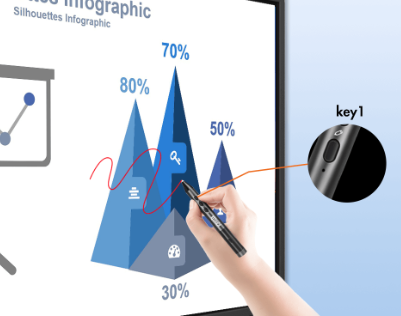
This real-time annotation and tagging can enhance the interactivity and participation of meetings. The smart pen allows attendees to annotate and mark in real time during meetings.
Through the annotation function of the smart pen, attendees can highlight and emphasize critical information, making it more straightforward to understand. Whether it is to circle important parts, cross out incorrect content, or add supplementary explanations. Therefore, smart pens can help attendees better understand and remember essential information during meetings.
Intelligent IQ SmartPen can be a wireless presenter to flip your PowerPoint slides and a laser pen to focus on your content. In addition, its custom button settings provide greater possibilities for more application scenarios.
Clear sound transmission helps reduce misunderstandings and communication barriers, improving meeting efficiency and participation.
The sound system can provide clear and high-quality sound transmission, ensuring that attendees can hear the speaker, participants, or other audio content, allowing attendees to listen and focus on the speech content fully.
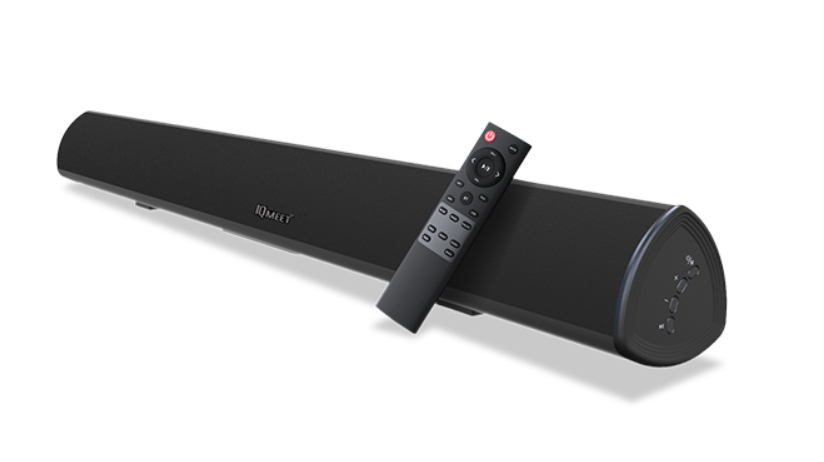
The physical components of IQ Soundbar use lightweight vibrating membranes and 19mm spherical silk membranes, which can meet various sound effects, allowing you to present perfect video works in the conference room and bring a theatrical experience to the conference audience. This immersive feeling can enhance the participants' sense of participation and engagement.
In conclusion, as a leading provider of audiovisual equipment and solutions, IQ aims to promote local and remote interaction and collaboration, enhance the capabilities of educational institutions and enterprises, and provide numerous effective solutions and technical services for academic and business applications. For more information on our brilliant meeting room and its related product, visit our product page or contact us for further inquiries.
Here are some other articles that we think might interest you:
The 10 Advantages of the Video Conference
Nowadays, data exchange transforms how organizations can securely retrieve more data from their network and other organizations. The functional share button has an essential significance and role in teaching and academic reporting by university professors.
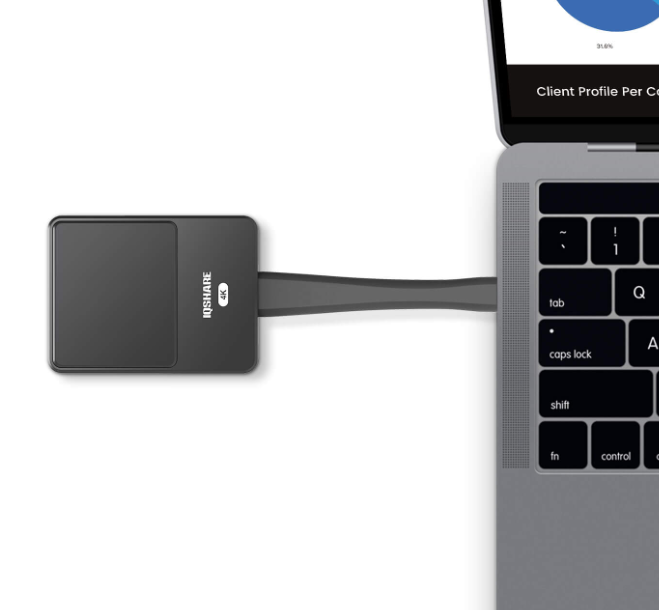
In university forums, the share button enables professors to present and share content in real time during lectures or academic presentations. By pressing the sharing button, professors can share their educational screen content or presentations to classroom display devices, on the other hand, students can also mirror the content from the screen wirelessly. The professor only needs to press the sharing button, and the system will automatically transfer the screen content to students or viewers without complex settings. Only one press start saves the professor's time and energy, allowing them to focus more on the teaching or presentation.
As a result, every student can focus on the classroom and clearly and coherently follow and understand the teaching or speech content.
The sharing button can improve the efficiency and fluency of professors' lectures or academic presentations. By quickly sharing screens or manuscripts, professors can better control lecture rhythm and time, providing a more coherent and efficient learning or presentation experience. Professors can present and explain content more smoothly, avoiding wasting time switching devices or adjusting settings.
One of the original intentions of the share button design is to enhance the interaction between the audience and the speaker. The share button can enhance the interaction and participation between professors and students. By sharing screens or manuscripts, students or audiences can more directly participate in teaching or speeches, ask questions, take notes, or engage in real-time discussions.
IQShare Button and BenQ InstaShare Button have many commonalities and distinguishing characteristics between these two products. Let's compare them in more detail from product performance perspectives, such as difficulty of use, security, compatibility, and level of interaction.
as tools for data transmission and sharing, the innovative IQShare Button and BenQ InstaShare Button have essential performance transmission devices, such as convenient usage, high compatibility, and information security.
With just one click, you can instantly share the screen content of your laptop. The wireless demonstration systems of IQShare Button and InstaShare Button allow you to free yourself from the constraints of cables and adapters by eliminating the need to install cumbersome cables. Every time you want to share your laptop screen, insert the button into the laptop, press and demonstrate.
You can choose the media to share through the screen of your personal computer and the touch control of IQTouch, or you can sit anywhere in the room and click the BenQ InstaShare Button button to share content without restrictions. Plug-and-play solutions allow everyone to focus entirely on discussions.
Both functional IQShare Button and BenQ InstaShare Button use AES 128-bit encryption. Advanced Encryption Standard is a widely recognized encryption algorithm that can use the same key for encryption and decryption. In file sharing and data transmission, AES 128-bit can effectively protect the confidentiality of shared files and transmitted data, resist various encryption attacks and cracking attempts, and encrypt and decrypt a large amount of data reasonably. It can also prevent unauthorized personnel from obtaining crucial confidential information. It is an advanced encryption standard for screen sharing with high security and long-lasting stability.
Whether using a practical IQShare Button or BenQ InstaShare Button, you don't need to worry about laptop discrimination chain and device connectivity issues. Because they are all compatible with the three mainstream operating systems of Windows, macOS, and Chrome, no matter what method of laptop you use, you can wirelessly share content with everyone in the room.
Compared to BenQ InstaShare Button, the brilliant IQShare Button has many superior performance features, such as more stable data transmission performance, making the teaching atmosphere more stable.
BenQ InstaShare Button uses universal technology to connect devices, which may cause users to wait longer during transmission.
IQShare Button can provide faster and more efficient data transmission and low latency and high bandwidth connections by optimizing transmission protocols and hardware design. Meet high-difficulty scenarios such as high-definition video transmission applications. It can also offer more comprehensive software and hardware support, making it easy to integrate into existing systems. For example, applying the IQShare Button in the IQ solution can bring more vital collaboration and higher convenience.
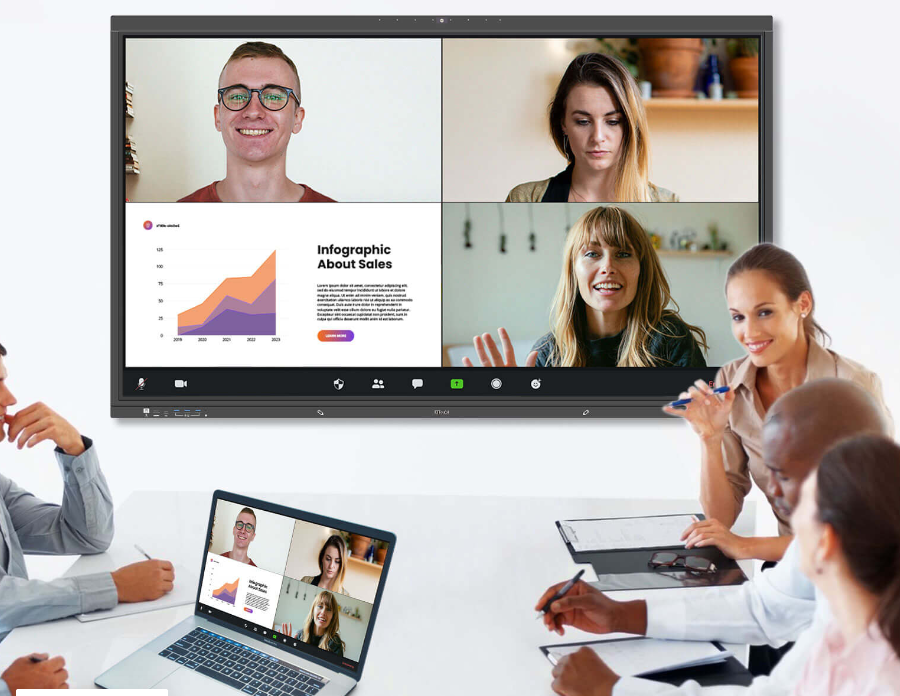
IQShare Button supports up to 4 Buttons casting to screen and 32+ attendance can mirror the screen from the display at the same time. There is an old saying in China that three cobblers are better than Zhuge Liang. So, we cannot ignore the power of these three more people to share files and discuss ideas. In addition, temporary users do not need to connect to the network when sharing files. They can still display or wirelessly share their laptops in the office through IQShare Button, allowing everyone to participate in the discussion.
The helpful IQShare Button allows users to mirror their device screen onto their IQTouch displaydevice fully. Teachers can connect their devices to IQTouch screens without wired connections and showcase their content through screen mirroring, providing a more flexible and convenient presentation experience.
Multiple listeners can also take turns using the IQShare Button to connect their devices to the IQTouch screen, achieving seamless switching and sharing.
And everyone can see the content displayed on the user's device, making it easy to share documents, presentations, charts, and other content. By sharing charts, data, or case studies, students can engage in in-depth discussions based on the document's content, raise questions, share viewpoints, and explore analysis and solutions, stimulating creative thinking and collective wisdom. By sharing multimedia files, students can actively participate in classroom discussions and feel their opinions and contributions valued, thereby promoting deeper interaction and cooperation.
When choosing between the IQShare Button and the BenQ InstaShare Button, it's essential to consider your specific needs for interaction, connection stability, data safety, and compatibility. If you prioritize faster transmission speed and a more interactive classroom experience, the IQShare Button may be the ideal choice. However, if you value simplicity and easy usage, the BenQ InstaShare Button could be a suitable option. Remember, it's crucial to assess your requirements and explore the features of each button to make an informed decision. If you are still heistate about how to choose the right share button, you can contact us and learn more about it.
Here are some other articles that we think might interest you:
The Future of Education: Smart School Solutions Lead the Way
How to Improve Meeting Effectiveness: 4 Tips and Smart Solutions
Interactive Flat Panels in Distance Learning: Bridging the Gap Between Students and Teachers
The function of capturing, recording, and live streaming lecture audio visual content in the lecture capture system has made its role increasingly important in modern education. But how to choose a suitable, cost-effective capture system is also an important topic. This article will compare the appearance design, operational difficulty, audio and video recording quality, recording content editing function, and application scenarios to determine which camera capture system is your best choice between the innovative IQVideo LCS710 and Extron StudioStation.

The two objectives we want to compare are leading technology companies worldwide. Now, let me learn about their background in research and development.
The unlimited potential of the IQVideo LCS710 lecture recording system can lead to the future of blended learning education. This advanced speech capture system is supported by state-of-the-art 4K ePTZ cameras and seamless settings, supporting up to 5 video sources, providing a truly immersive interactive educational experience. Provide educators with an intuitive lecture recording function that effortlessly records captivating lectures with just one click.
From the perspective of audio and video technology, Extron's hardware products adopt advanced audio and video technology, providing high-quality image, sound recording, and playback, providing users with a high-quality recording and playback experience. At the same time, it also has powerful signal processing and distribution functions, supporting multi-source input and multi-display output, suitable for complex classroom and conference room settings. In addition, Extron's products support network integration and remote management, making it easy for administrators to monitor, configure, and control devices.
The user-friendly IQVideo Lecture Capture System LCS710 has a 13.3-inch interactive touch screen with scratch-resistant tempered glass.
The 13.3-inch capacitive touch screen of IQVideo Picture Capture System LCS710 allows users to interact through the touch screen. Users can click, slide, zoom, and conduct other operations on the screen with their fingers or dedicated touch pens to obtain an intuitive user interface and operating experience. In addition, the new and intuitive UI design greatly simplifies user operations.
The scratch-resistant tempered glass of IQVideo Picture Capture System LCS710 is a particular type of glass material with high strength and scratch resistance, providing more long-lasting durability. It can effectively protect the surface of the touch screen from scratches, fingerprints, and other physical damage. This protective layer can extend the lifespan of the touch screen and ensure that the screen's visibility and touch function are not compromised.
Extron StudioStation contains a series of audio and video recorders and processors, and its exterior design principle is to meet the regular operation of functions. However, its remote control panel and tabletop enclosure are available in a black finish to complement any decor.
It is worth celebrating that IQVideo LCS710 and Extron StudioStation's recording and opening functions are both straightforward. But there are also specific differences. There is no need to worry about tedious operating procedures and pairing procedures. Only touch one button on the video station's screen, so you can start recording video lectures immediately from IQVideo LCS710.
The Extron StudioStation simplifies the recording process by automating all functions. Users can start recording and streaming with just one button press without needing support staff. The operation of recording and capturing is straightforward to understand.
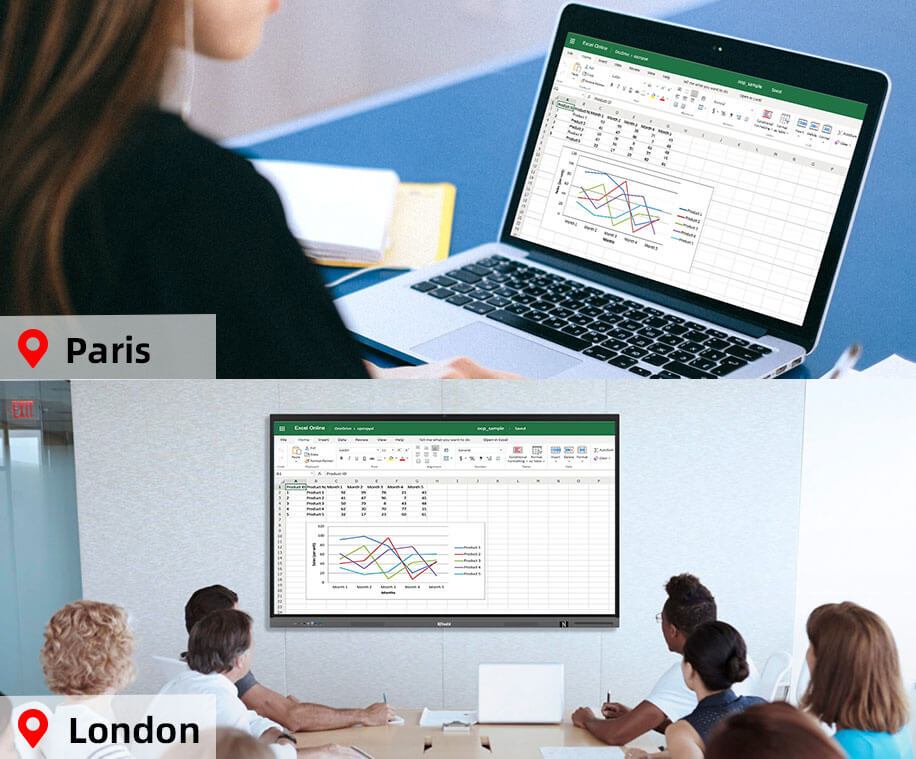
Extron's advanced scaling and adaptable signal processing allow for excellent recording of almost all HDMI source resolutions. The default recording settings are set to capture at 720p with a bitrate of 5 Mbps, resulting in an MP4 file that can be played on most media players or editing software. Visual content capture ability The core function of the lecture capture system is clear audio reception and high-definition capture of images. It's a pity that Extron StudioStation didn't provide particular visual content capture devices. However, the two 4K ePTZ cameras of IQVideo Lecture Capture System LCS710 can capture more details when recording.
Compared to Extron StudioStation, the 4K ePTZ camera is the most significant advantage of IQVideo LCS710. Two ePTZ cameras with a resolution of 8.4 million pixels can capture four scenes of teachers and students. The camera adopts automatic tracking technology, which can intelligently switch between panoramic and close-up views during teaching.
In addition, the video station of IQVideo LCS710 can also support multiple input sources, including teacher and student acquisition, teaching courseware, external images, and more. Users can also choose to generate mixed recorded videos or source videos separately.
Although many users do not have a high demand for modifying recorded content, giving users a certain degree of editing ability can improve the efficiency of recording, disseminating, and replaying videos.
Horizontal Video Mirroring LinkLicensecan of Extron StudioStation can save time and improve the efficiency of video editing work. Recordings from lightboard applications appear reversed as if seen in a mirror. The horizontal mirroring function automatically flips the video to make the recordings readable. It means switching the video horizontally to accommodate lightboards or other situations where the video image must be converted because the presenter faces the camera while writing on a see-through surface.
A ceiling microphone with a 7-meter voice of IQVideo LCS710 can record distance sounding. It can expand the range of voice pickup in large rooms. The built-in audio processor of IQVideo LCS710 supports automatic mixing, noise suppression, and acoustic echo cancellation technology, ensuring that lecture videos are noise-free. The recording system can make the sound more transparent using acoustic echo cancellation technology. It can eliminate the interference of the sound played by the speaker on the sound captured by the microphone, reduce noise and reverberation, and improve the quality of recorded sound.

A cost-effective lecture capture system should have multi-scenario applications and adaptation functions to meet the needs of more plans, and user needs to the greatest extent. The two products we compared both have rich applicability in functional scenarios. They can play a role in lecture halls, flipped classrooms, business seminars, video conferencing, and other places. Simply press the start button of IQVideo LCS710 to transfer real-time classes to YouTube and Facebook. The system is compatible with the RTMP/RTMPS streaming protocol. Easy construction of blended or flipped classrooms
In addition, Extron StudioStation not only supports Facebook Live's RTMPS - transmitting encrypted data streams to Facebook Live to prevent third-party interception of live streams. It also supports RTMP for Vimeo and AWS - transferring data streams to Vimeo, AWS, uStudio, and other selected streaming services.
Through the comparison in this article, we found that the innovative IQVideo LCS710 has a higher cost-effectiveness and is more likely to be your top choice. It is a groundbreaking speech capture and recording solution in a dynamic blended learning environment and at the forefront of educational innovation. If you also want to learn more, click here to contact us.
Here are some other articles that we think might interest you:
Transforming Education with Lecture Capture Technology
Streamlining Lecture Capture Through System Integration
Capturing Success: The Power of Lecture Capture Systems in College
Copyright © 2017.Returnstar Interactive Technology Group Co., Ltd All rights reserved.

